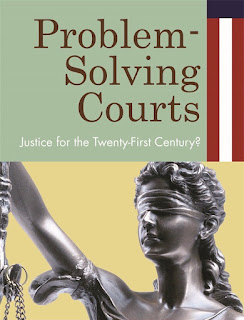Midtown Turns 20
We are two weeks away from the 20th anniversary celebration of the Midtown Community Court and we are busy putting the finishing touches on what promises to be a great event.
The party doesn't have an official theme, but if it did, the theme would probably be public-private partnership. The Midtown Community Court would not exist were it not for the combined efforts of dozens of government agencies, non-profit organizations, and businesses, including the Shubert Organization, which will be honored at the October 21st event. If the list of people who have already bought tickets is any indication, we will have a good mix of all three sectors represented at the Morgan Library. Should make for an interesting gathering.
As is my wont, in the run-up to the event I have been thinking about the history of the Midtown Community Court, much of which I have had the pleasure of witnessing first hand. I thought I would share a few photos from our archives that strike a particular chord with me. The first is the photo above which comes from Midtown's 10th anniversary celebration, which we celebrated with a breakfast that featured the Lord Chancellor of England, who talked about how his country was adapting some of the ideas that began at the Midtown Community Court. The New York Times ran a nice piece on his speech. The photo above shows the Lord Chancellor on the bench with Julius Lang and Judge Eileen Koretz.
This is a photo of two of the behind-the-scenes players that made Midtown a success in its early days: Herb Sturz and Michele Sviridoff. The founder of the Vera Institute of Justice, Herb has played a number of influential roles in New York City, including helping to conceive of the idea of the Midtown Community Court in the early 1990s. Michele served as Midtown's original director of research. She literally wrote the book on Midtown -- she is co-author of Dispensing Justice Locally, which documented that Midtown helped to reduce local crime and improve public trust in justice.
This photo features John Feinblatt, Midtown's founding director, alongside Robert Keating (then the administrative judge responsible for New York City's criminal courts) and Richard Zorza (a technology guru who helped design the case management system for Midtown).
Finally, no review of the history of Midtown would be complete without mention of Judith Kaye and Jonathan Lippman, the two chief judges who have been responsible for not just sustaining the project, but promoting its values across the New York court system and around the world. In this photo, they are pictured along with New York City Mayor Michael Bloomberg.

